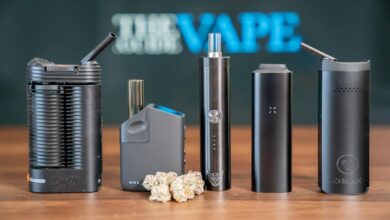Exploring the Main TTM Method: A Comprehensive Guide

In the ever-evolving world of business and finance, it’s essential to stay updated on the latest trends and methodologies. One such methodology that has gained prominence in recent years is the Main TTM (Time-To-Market). This approach emphasizes speed and efficiency in product development and market entry. In this comprehensive guide, we will delve into the concept of Main TTM, its significance, and how it is employed in various industries.
Understanding Main TTM
Main TTM, which stands for “Time-To-Market,” is a crucial metric for businesses aiming to streamline their product development process. It refers to the time taken from the inception of an idea or product concept to the point where the product is ready for launch in the market. The shorter this time frame, the more competitive and responsive a company can be.
The Significance of Main TTM
In today’s fast-paced business environment, Main TTM plays a pivotal role in determining the success of a product or service. Let’s explore why it is so important.
Competitive Advantage
A shorter Time-To-Market provides a significant competitive advantage. In markets where new products and innovations are introduced at breakneck speed, the ability to bring your product to the market faster than your competitors can make a substantial difference. It allows you to capture market share, gain customer loyalty, and potentially set the industry standard.
Customer Satisfaction
Customers expect products that meet their needs and desires promptly. A faster Time-To-Market ensures that your product or service is available to customers when they want it, enhancing their satisfaction and loyalty.
Cost Efficienc
A protracted product development cycle can be costly. It involves more time, resources, and operational costs. Main TTM reduces these expenses, making it a more cost-effective approach.
Adaptability
The business landscape is unpredictable, with evolving trends and changing customer preferences. A quicker Time-To-Market allows companies to adapt to these changes more swiftly, ensuring that their products remain relevant.
Implementing Main TTM
Now that we’ve established the significance of Main TTM, let’s explore how to implement it effectively.
The heart of Main TTM is an efficient and streamlined product development process. This involves creating cross-functional teams, establishing clear project timelines, and using agile methodologies to iterate quickly and respond to feedback.
Market Research and Validation
Prioritize market research and validation. Before investing resources into product development, ensure that there is a genuine demand for the product. This step reduces the risk of failure and ensures that the product meets customer needs.
Use of Technology
Leverage technology to expedite the product development process. Advanced tools and software can assist in design, testing, and prototyping, reducing manual effort and shortening development time.
Collaboration and Communication
Effective communication and collaboration among teams are essential for Main TTM. Clear and concise communication ensures that everyone involved is on the same page, reducing misunderstandings and delays.
Case Studies: Successful Main TTM Implementation
To better understand how Main TTM works in practice, let’s look at a couple of case studies.
Case Study 1: Apple Inc.
Apple is renowned for its ability to bring cutting-edge products to the market quickly. The release of the iPhone, for example, was a remarkable demonstration of Main TTM. Apple’s seamless coordination among design, engineering, and marketing teams enabled them to launch a revolutionary product in record time.
Case Study 2: Toyota
Toyota, a leading automaker, implemented Main TTM in their production process. By adopting the principles of lean manufacturing and continuous improvement, they reduced product development times and improved the efficiency of their production lines. This approach not only reduced costs but also allowed Toyota to respond more swiftly to market demands.
Challenges and Pitfalls
While Main TTM offers numerous benefits, it’s not without its challenges and potential pitfalls. Some of the common issues include:
Quality vs. Speed: There’s a risk of sacrificing product quality for speed. It’s crucial to strike a balance and ensure that Main TTM doesn’t compromise the integrity of the product.
Resource Allocation: Allocating the right resources at the right time can be challenging. Companies need to plan meticulously to avoid bottlenecks in the development process.
Overreliance on Data: While data-driven decision-making is vital, it’s essential to balance data with creativity and intuition. Overreliance on data alone can lead to missed opportunities.
Resistance to Change: Implementing Main TTM often requires a cultural shift within the organization. Resistance to change can hinder progress.
Conclusion
Main TTM is more than just a buzzword; it’s a strategic approach that can significantly impact a company’s success. By focusing on reducing the Time-To-Market, businesses can gain a competitive edge, satisfy customers, and operate more efficiently. However, it’s crucial to implement Main TTM thoughtfully, considering the unique needs and challenges of your industry.
In today’s dynamic business landscape, the ability to adapt, innovate, and respond rapidly to market demands is essential. By embracing Main TTM, you can position your organization for success and ensure that your products and services are not just timely, but also exceptional.




